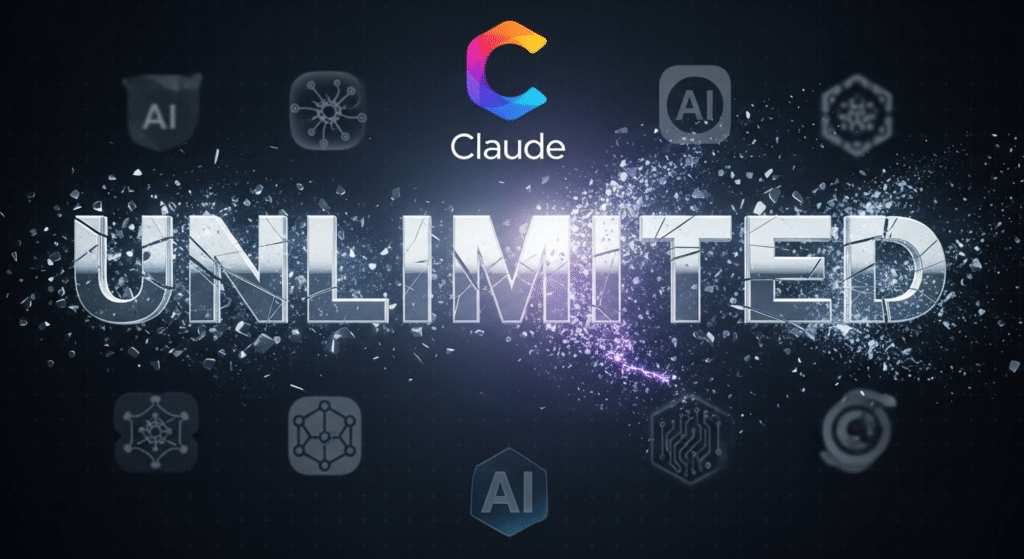Citing rampant abuse and unsustainable costs, Anthropic is capping its paid Claude plans. But users call it “collective punishment” and a sign of a troubling industry trend.

The golden era of “unlimited” artificial intelligence is officially over. In a move that has sent shockwaves through the AI community, Anthropic announced it will be implementing new weekly rate limits on its popular paid subscription plans, Claude Pro and Claude Max, starting August 28th.
While the company blames a small fraction of users for abusing the system, the decision is being seen as a major turning point for the industry. It signals the end of the all-you-can-eat AI buffet and the beginning of a metered, more expensive future. For developers, creators, and power users, the message is clear: the bill for AI’s incredible power is finally coming due.
What Are the New Rules? Anthropic’s Confusing New Limits
The core of the change is the shift from a perception of infinite use to a capped, weekly allowance. Anthropic has outlined the new limits in terms of “hours of usage,” a metric that has left many users confused and frustrated.
Here’s the breakdown:
- Claude Pro ($20/mo): Subscribers will receive approximately 40 to 80 hours of weekly usage on the Sonnet 4 model.
- Claude Max ($100/mo): This plan includes 140-280 hours of Sonnet 4 usage and, more importantly, 15-35 hours on Claude Opus 4, Anthropic’s most powerful model.
- Claude Max ($200/mo): The top-tier plan provides 240-480 hours of Sonnet 4 and 24-40 hours of Opus 4.
Crucially, Anthropic has stated that if users hit these weekly caps, those on Max plans will have the option to purchase additional usage at standard API rates—a hybrid model of subscription and pay-as-you-go.
Why the Change? The “Abuse” Narrative vs. Economic Reality
According to Anthropic, the decision was forced by a tiny subset of its user base (less than 5%) who were consuming an astronomical amount of computing power. The company cited extreme examples, including:
- Users running Claude Code nonstop, 24/7, in the background.
- A single user consuming “tens of thousands in model usage on a $200 plan.”
- Users violating policies by reselling and sharing accounts.
However, the community isn’t entirely buying it. On platforms like Reddit, many users see this as a convenient excuse. “This was going to happen no matter what,” one user commented. “This is just a convenient excuse for them.”
The broader consensus is that the “unlimited” marketing of the past year was an unsustainable user acquisition strategy. The cost of running these advanced AI models is immense, and companies like Anthropic and OpenAI can no longer afford to subsidize infinite usage. The “abusers” simply provided the perfect narrative to justify a necessary business decision.
“Collective Punishment”: The Community Backlash
The reaction from the power-user community has been swift and severe. The primary complaints center around two themes: fairness and clarity.
- A Lack of Transparency: The term “hours of usage” is seen as vague and unhelpful. Users have no way to track their consumption, leading to anxiety about being suddenly cut off mid-project. Demands for a clear usage meter or a token-based system are widespread. “Let me see what my current usage is so I can quantify what kind of work I can actually do,” one frustrated user wrote.
- Perceived Unfairness: Many subscribers feel they are being punished for the actions of a few. “Why not directly punish those using it 24/7 instead of adjusting the limits for everyone?” is a common sentiment. This has been labeled “collective punishment” and has eroded trust between Anthropic and its most dedicated customers.
The Bigger Picture: The End of an Era for All AI
Anthropic’s move is not happening in a vacuum. It is the most definitive sign yet of a major industry-wide shift:
- OpenAI’s ChatGPT has long had a message cap on its most powerful model, GPT-4.
- The “free money” era of venture capital, which allowed companies to burn cash for growth, is over.
- The true cost of compute is being passed on to the consumer.
We are moving from a simple subscription model (like Netflix) to a utility model (like an electricity bill). You pay a flat fee for a baseline service, but heavy consumption will cost you extra. This “enshitification process,” as one user cynically called it, marks the maturation of the AI industry.
For the casual user, these changes may go unnoticed. But for the 5%—the innovators, developers, and researchers building the future on these platforms—a new paywall has just been erected. This raises a critical question: will metered access stifle creativity and make cutting-edge AI a tool only for the wealthy?
The future of AI is no longer unlimited. It’s a resource to be managed, a budget to be balanced, and a sign that the free ride is well and truly over.
